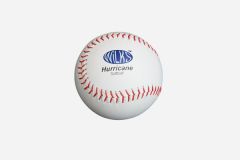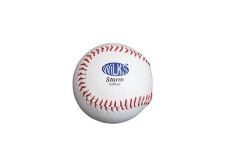Softball Balls
Despite the name of the game, real softballs are not actually very soft! If you have ever played softball, you will know that a softball ball can cause some serious damage.
Every softball ball is made up of two parts - the core and the covering.
The material used for the centre of a softball’s core tends to be one of fibre kapok, polyurethane, granulated cork, rubber, or a combination of rubber and cork. No matter which material is used for the core’s centre, a fibrous yarn (kapok) is wound tightly around the centre of the core.
The covering of a softball is made of synthetic, composite, or natural leather. The leather is stitched around the ball with a red cotton/ linen thread.
Using a real softball ball in a practice setting/ session could lead to disaster - think broken windows, broken fingers, etc.
This is why foam softball practice balls are great. Using foam softball practice balls means batters can give it a full hit without having to worry. Fielders also have the added reassurance that they can go for a catch 100% without potentially fracturing fingers in the process.
Softball training balls
Some of the leading brands that make outdoor and indoor softball practice balls include Diamond, Easton, and Soft HIT.
Diamond’s foam softball practice balls are lightweight and have a high-visibility yellow cover. They are 12” in diameter and are great for multiple hitting drills,
Soft HIT practise softballs are made of polyurethane foam and are safe, durable, and affordable. They weigh approximately two ounces, are 12” in circumference, and can even be used in pitching machines.
Easton’s Incrediball soft stitch training ball is 11" in diameter and has a foam core - making it soft to touch.





